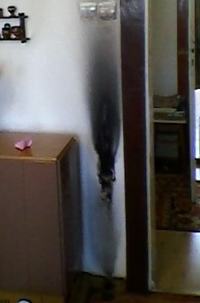
Plumpi
You have strayed very far from the topic
Can electricity travel through the walls and kick And. secondly, on the forum you can't insult anyone
(even yourself) I took you seriously because I know a thing or two about your other posts. I gave in brief examples of
different resistance measured with an ordinary meter low voltage.
Quote: And have you heard of such a thing as semiconductors
an ordinary silicon diode resistance measurement with a meter will show Few MΩ , and at higher voltages measuring in series with another resistor (like measuring grounding resistors) will be several Ω , in construction you have this effect when connecting different metals (copper / aluminum cables) and even between Gas concrete (popular suporex) and gypsum plaster (acts like an old-fashioned selenium rectifier) and on the wall you have a positive voltage to PE.
Quote: Or with a breakdown voltage
I don't think I need to explain this - spark arrestors, insulation breakdown , etc.....
Quote: Or about the electrochemical properties of materials (varistors, surge protectors)
here jokingly as the most primitive example I gave electrolytic capacitors, with which every electronics technician, and some electricians have met and seen the pyrotechnic effects when the voltage is exceeded.
No and aquarium heaters which without any semiconductors, microprocessors, and other newfangled electronic Gadgets perfectly maintained the temperature of 26 ° C in the aquarium - and that's just to the 220V mains hooked up two nails in a glass tube and the right amount of salt. and the walls behave similarly, as cold they kick as warm they do not kick and this cold / warmth of the walls comes from the content of some salt.
As another curiosity for all electricians, this is an example of spontaneous combustion of an electrical outlet of which a long time ago we did an expertise belonging to the SEP at the time.

As you can see it's a nice hole in the wall and a trace of the outlet is gone, in the floor burned a deep hole 8cm in diameter from dripping plastic. Terrible stench was in the stairwell and smoke coming out from under the door, the owner was not at home and the neighbors called the fire department , they entered through it and extinguished the fire stink.
There was the problem of the broken window and the cost of the intervention of firefighters.
The firefighters and poor electricians of the administration clung to the owner "What did you plug into this socket"
She insisted that she had never used this socket, and even for some time she felt that the wall near the door frame tingled with electricity .
It was a curb socket, the wire was new (7 years old) 3x2.5mm² next to a heavily heated after the night tariff accumulation stove fed from a separate three-phase line.
The woman was telling the truth - there was also an electrochemical reaction here, heat, gypsum deposition of the box and snow on the cables, I do not remember exactly, but chemists explained it somehow.
At such a furnace, the wall was certainly dry - yet it tingled with electricity.
The eSy 16A fuses from the outlet and 25A in the stairwell did not work, if there had been a differential for all outlets would probably have turned off the voltage.



